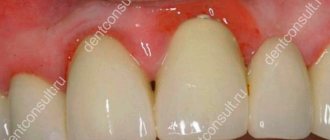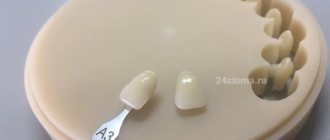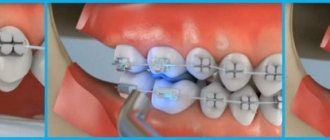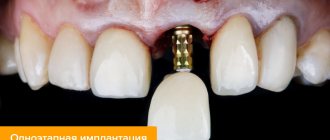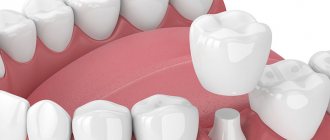Clapper
Opening our list is an ancient form in which large flat stone slabs rest on piles of stones. Most of them were built in the Middle Ages to create a path across a river or other obstacle.
An excellent example of this type is the Postbridge, built over the East Dart River in the English county of Devon. Its slabs are more than 4 m long, and each slab weighs more than 8 tons. It was built in the 13th century to allow horses to cross the river, delivering tin to the famous town of Tavistock.
2
Truss
Instead of one beam having to withstand all the forces, a series of beams and trusses are used. A truss is a triangular frame that distributes tensile and compressive forces across the bridge.
There are several ways to build a truss bridge, but they all have the same goal: to distribute tension and compression forces so that the structure does not collapse. The truss gives stability to the entire structure, capable of withstanding large external loads over a long span.
3
Arched
They began to be built in ancient times, and they remained popular until the industrial revolution and materials science allowed architects to create more advanced and efficient structures.
The underside of an arch bridge looks different than other types. All have a curved bottom that looks like someone cut a semicircle out of the bottom. Often such structures can be found within cities above small rivers, but also more massive ones above large rivers.
4
Lunar
One of the most romantic types. The semicircular arch, reflected in the water, completes a 360-degree circle and resembles a full moon. These structures originated in Asian culture. They were originally built in China and then brought to Japan.
Mainly made of stone, wood and metal. Because they are steep, they have the advantage of not using up space from adjacent fields. This is a great way to encourage pedestrian traffic above the structure and boat traffic underneath it.
5
Bridge classification
Bridges are classified according to the following criteria:
By purpose: railway, road, metro bridges, pedestrian, combined, water overpasses, special bridges for passing pipelines and cable routes;
By design (Fig. 2.3): cable-stayed beams, suspended, arched, pontoon,
According to the materials from which they are made: steel, reinforced concrete, concrete, natural stone, wood (the material of the span is the determining factor);
According to the static scheme: split, continuous, cantilever;
Mobile
Some of the most technologically sophisticated bridges are moved to accommodate boats and barges. It can be vertical lifting, lifting, rotating or transport.
They are driven by electric motors, whether hydraulic pistons, work winches or gears. In general they can be quite long. The main disadvantage is that road traffic must be stopped when it is open to water traffic.
6
Underlined ribbon
A tensioned ribbon bridge, also called a chain bridge, is a tension structure. It has two or more suspension cables built into the deck. These cables follow the arc of the catenary between the supports and provide rigidity.
The structure is usually made of concrete reinforced with steel tension cables. These bridges are very aesthetic, economical, and require virtually no maintenance. According to the editors of TopCafe, these are some of the most beautiful bridges in the world.
7
Reinforced concrete bridges.
Reinforced concrete bridges with a design span length of up to 4-5 m are constructed with slab spans, with a length of over 5 m - with ribbed spans, and with an average length - of an arched type. The slab span structure is a solid reinforced concrete slab with side consoles and sides to hold the ballast prism (Fig. 34).
Rice. 34. Slab reinforced concrete span structure: 1 - insulation; 2 - ballast trough; 3 - plate Fig. 35. Ribbed span structure: 1 - beam-ribs; 2 - diaphragm; 3 - insulation; 4 — sides of the ballast trough
In ribbed span structures (Fig. 35), the main load-bearing element is longitudinal beam-ribs connected to one another by transverse diaphragms. In the upper part, the ribbed span structure has a cantilever device for the ballast layer. Insulation is laid under the ballast layer. On some reinforced concrete bridges there is no ballast trough and wooden under-rail cross members are laid directly on the reinforced concrete beams. This design reduces the mass of the span and the consumption of concrete.
- << Back
- Forward >>
From box beams
Photograph: Scott Davis, CC BY-SA 3.0, via Wikimedia Commons
The main beams consist of hollow box beams. The box beam is made from structural steel, prestressed concrete, or reinforced concrete and steel.
The box is usually trapezoidal or rectangular in cross section. This reduces the thickness of the slab, and therefore the weight of the entire structure. These bridges are mainly used for highway interchanges and modern elevated light rail structures.
8
Bridge requirements
Important
A number of requirements are imposed on automobile bridges, focused on the safety of the vehicle.
The main ones include:
- Light weight. All or part of the bridge structure does not involve the use of springs. Consequently, the reduction in weight improves comfort and smoothness of movement.
- Minimum vertical dimensions. The characteristic affects the ground clearance and, accordingly, the cross-country ability of the vehicle. Additionally, this parameter affects the floor level.
- Rigidity. The bridge is used to secure the wheels. The degree of wear and controllability of the car depends on the correct fastening. Even slight curvature of the beam during operation can lead to deterioration of performance and damage to other mechanisms.
- Strength. Compliance with this requirement is very important, because it affects the safety of the vehicle.
- Car layout accounting. When manufacturing a bridge, the design features of other elements must be taken into account. This means that the mechanism should not interfere with the movement of nodes vertically/horizontally within the boundaries of the load-bearing part.
Special requirements may also apply to certain types of mechanisms. For example, for the drive axle of a car this is the transmission of torque to the wheels and its increase, the transmission of body inertia to the wheels, etc.
Segmental
Unlike traditional construction methods, which build structures in large sections, segmental construction is built from small pieces called segments.
They consist of concrete parts that are either built elsewhere and transported to the construction site, or constructed entirely on site. Although this type of construction is very economical for long spans, it requires high-tech machinery and special safety precautions during construction.
9
Construction of various artificial structures
Important
When constructing artificial structures on highways, a lot of work is done on preparation, selection of a suitable location and optimal materials.
The task of engineers is to create a reliable structure that can perform the functions assigned to it and withstand various types of influences for a long time. Below we will briefly consider the design features of various structures.
Bridges
Structurally, road and other road bridges consist of supports and span structures. The first ones are coastal and intermediate. Regardless of the type of support, they take on the entire load from transport, road surface, precipitation, etc. For better fixation, the supports are attached to a foundation that rests on the ground or a specially created foundation. Concrete, stone, metal or reinforced concrete are used as materials for supports.
The span elements consist of load-bearing structures (beams) on which the road is located. Key elements are interconnected to provide stability and rigidity to the one-piece structure. The most common are beam bridge systems. The spans in them are made using beams. By design, bridges can be T-shaped, arched, suspended and cable-stayed.
When constructing and repairing bridges on highways, the requirements of current GOSTs and SNiPs are taken into account. If necessary, it is possible to erect a number of other artificial structures, which is necessarily included in the project.
Overpasses and viaducts
An overpass is a structure that is being built on another road or railway. It is simpler in design than a bridge, so it has a different name. The main difference is the simplified type of supports, because during construction the flow of water, the flow of ice, the risk of erosion of the supporting part, etc. are not taken into account.
An overpass on highways is a bridge that is laid over a regular railway or highway, city streets, and pedestrian paths. Its design involves the use of inclined / vertical diaphragms. Support posts are located above each rib of the span. They rest against transverse diaphragms, and then their number may be less.
A viaduct is another type of bridge that is used to overcome various obstacles. As a rule, such an artificial structure is necessary to lay a road through a hollow, gorge or ravine.
The construction of such structures is relevant in the absence of possibility and high cost of the embankment. In this case, designers focus on the depth of the ravine. Structurally, viaducts also consist of supports of different lengths and a top road surface.
Tunnels
Recently, the construction of not only bridges, but also road tunnels has been developing, making it possible to cross difficult areas. Depending on its purpose, the tunnel can be used for cars, cyclists, pedestrians, trains, ships and other vehicles.
Tunnels are built in places where bridges or other artificial structures are impractical or impossible. The most common construction method is closed, when the road surface is laid inside some natural object.
During construction, a mining method of laying can be used using drilling and blasting with subsequent removal of excess material to the surface. The second option is to use the combine method. Its essence lies in the use of special equipment (harvesters).
There are also open construction methods. As a rule, the pit version is used, when a recess of the required width is created with subsequent strengthening of the side parts.
Also used are trench (more often used for pedestrian structures) and panel. Regardless of the construction method, tunnels are always strengthened by creating a foundation and a concrete structure to protect them from collapse.
Overpasses
The category of overpasses includes track bridges, which are located above ground level and have sections for exit/entry. Structurally, they are stationary and collapsible. In production can be used:
- tree;
- reinforced concrete;
- metal.
As a rule, overpasses are built to provide access to the bridge span, and sometimes to separate the highway from the city limits.
The structure itself is located above the surface of the earth, but the main supporting part is based in the ground. Reinforced concrete columns are used as supports. To erect them, casing pipes are pressed into the ground, metal reinforcement is installed inside them, and then poured with concrete. Next, the pipes are removed, and the reinforced concrete column remains inside as a support. A group of such structures plays a supporting function.
Subsequently, a reinforced concrete support is placed on the base, and after it a span of the overpass is made in the form of a reinforcement grid with further concrete pouring. The support can be metal or concrete. Recently, steel has been increasingly used. Crossbars are mounted parallel to the ground, ensuring load distribution over the surface.
When constructing overpasses, special requirements are imposed. For example, the angle of inclination should not be more than 40, and the span height should be five meters or more. The asphalt on the surface should provide high-quality traction between the car’s wheels and the road, and fences should be installed along the edges of the road.
Pipes
Culverts are also included in the category of man-made structures. When laying and manufacturing them, special requirements are placed on reliability due to the risk of deformation. At the same time, eliminating defects causes a number of difficulties and entails considerable costs. During the process of creation and installation, the region of operation is taken into account.
Thus, in harsh climates, soil heaving is required. As for the material, artificial structures can be made of metal, concrete, stone and reinforced concrete. The most popular are reinforced concrete pipes, which are assembled from several parts from 1 to 6 meters in length. Depending on the type of mound, they can be 1-point, 2-point or 3-point, and in shape - in the form of a circle, rectangle or oval.
To fix the structure, special reinforced concrete parts are used, which are characterized by high durability, reliability and resistance to corrosion. In some cases, laying a foundation is necessary, but when using corrugated pipes you can do without it.
Retaining walls
Such structures are indispensable for protection against collapses on the banks of various bodies of water. Can be made from different materials:
- stone;
- concrete;
- rubble concrete masonry;
- reinforced concrete sections.
Crushed stone, sand and natural soils are used to create the base. The wall at the bottom can be T-shaped for better fixation.
Depending on the design, a drainage pipe may be installed below ground level. Alternatively, a box-type system can be used, which involves assembling a structure from several sections. Steel is increasingly being used as the main material.
Viaduct
The viaduct consists of a series of small spans between tall towers. Its purpose is to carry a road or railway through a valley or wetland. Although they are much more cost-effective than long-span bridges or tunnels, they usually lack vertical and horizontal clearance for large vessels.
Those built over water use successive arches or islands. They are usually connected to tunnels or other types of bridges to cross navigable waters in the form of viaduct sections.
10
Axle gear functions
One of the main elements of the front or rear axle is the gearbox, which takes the torque from the engine crankshaft, reduces it and transmits it further to the transmission elements. In particular, the intermediate function is performed by the center differential, which distributes the torque to the drive wheels in a specific ratio.
Depending on the installation location, there are front and rear gearboxes. Thus, in cars with front-wheel drive, a gearbox of the corresponding axle is used, built into the gearbox. In rear-wheel drive vehicles, this element is located at the rear of the vehicle. In vehicles with all-wheel drive, a 2-gear scheme is used.
In particular, the front one is located in the gearbox, and the rear one is on the axle. Both nodes are connected to each other using a cardan.
Depending on the connection of gear teeth, there are four types of gearboxes:
- bevel - a pair of cone-shaped gears located at right angles, used on front-wheel drive and rear-wheel drive vehicles;
- cylindrical - has the form of two clutches located parallel to the gear, used on front-wheel drive cars;
- hypoid - gears in such mechanisms are located at a 45-degree angle, used on rear- and front-wheel drive vehicles;
- worm - a screw installed perpendicular to the driven gear, used only in the steering unit.
The main parameter of the gearbox is the gear ratio, by which one can judge the ratio of the angular speeds of the drive / driven shafts. Devices with high parameters are installed on trucks with high weight. Such cars move at low speed, but are capable of carrying large loads. Devices with a low gear ratio are installed on cars with low weight, which allows you to move at higher speeds.
The gear ratio is determined by the number of engagements of the driving and driven gears. For example, parameter 5.1 says that with one revolution the drive gear will contact the driven gear 5.1 times.
The importance of a car’s axle is difficult to overestimate, because this unit connects the right/left wheel of the axle, takes on the main forces and directs them through the suspension to the supporting structure. The main feature of the unit is its flexibility and a large number of designs depending on the purpose, load capacity and other features of the transport.
Cantilevered
Constructed using cantilevers, structural members that run horizontally and are supported at only one end. For small pedestrian bridges, the cantilever can be simple beams.
Cantilevers are useful for blocking a waterway without dividing it with river piers. They are mainly used for pedestrians, cars and trains. The longest cantilever bridge in the world is the Canadian Pont de Quebec, built in 1917.
11
Suspension
In suspension bridges, the cables supporting the deck are suspended vertically (called hangers) from the main cable. This main cable is secured at both ends because any load applied to the structure is converted into a tension force.
A suspension bridge requires less materials to construct and longer spans can be achieved compared to other bridge types. This type is best able to withstand earthquakes.
12
What types of bridges are there? Part 1. Record
There are two options here - either the bridges built must be drawbridges, or their spans must be so high that river ships can easily pass under them. The “only” question is: what to make such a bridge from?
Concrete or masonry, invented in ancient Rome, did not make it possible to build a bridge of sufficient height. Therefore, arched bridges made of stone or concrete did not allow ships of that time to sail under such a bridge; the span over the water was too low.
Ponte de Tiberio in Rimini Photo: ru.wikipedia.org
But time passed and eventually the necessary, sufficiently durable materials appeared, making it possible for ships to navigate under bridges.
When a lot of cheap iron appeared in the 19th century, architects did not immediately realize that this was an excellent material for buildings, bridges, skyscrapers, and many different structures that were impossible to build without iron. Which architect was the first to notice this?
Bust of Eiffel at the foot of the Eiffel Tower. Photo: ru.wikipedia.org
Gustave Eiffel. The genius of 19th century construction. A man who radically changed the architecture of the construction of various gigantic structures, using iron as the basis of the power frame.
He completed his studies in 1855 and already designed his first bridges based on the use of new materials. He built various structures, bridges, train stations, houses all over the world. In Africa, in Maputo (Mozambique) and Luanda (Angola), in Latin America, in the USA and in Russia. He even took part in the construction of the Statue of Liberty, which stands in front of the entrance to New York Harbor. They designed the power frame of the statue.
In 1880−1884. Eiffel built the Gharabi Viaduct over the Tuyeres River in France. This bridge is arched, but its size amazed the architect’s contemporaries and admires it even in our time. The total length of the bridge reached 564 meters, the main arch had a span of 180 meters and a height of 60 meters. The bridge crossed the valley at an altitude of more than 130 meters. In 1965, the bridge received the title of historical monument.
For that time, this was incredible; using the old technology using masonry, such a structure would have been absolutely impossible to make, which is why the bridge was not even designed here before the introduction of new construction technologies.
Garabi Viaduct. Photo: ru.wikipedia.org
Until the 19th century, bridges were structurally only arched, and the use of steel and reinforced concrete in their construction made it possible to build beam, suspension or combined bridges.
In cases where it was necessary to connect the banks of very deep and wide rivers or the edges of deep canyons or abysses with a bridge, it became possible to build suspension bridges.
In fact, the very first suspension bridges, or bridges on chains, across chasms in Tibet began to be built in the 5th-6th centuries AD by the Chinese. And this technology penetrated into Europe precisely as “Chinese”; in the 18th century, bridges of the “chinoiserie” type began to be built in Europe. The Englishman Finlay even received a patent for the design of chain bridges.
American John Fidley initiated the construction of suspension bridges in the USA at the beginning of the 19th century. They say that in the era “before strength calculations”, approximately until the 1820s, before building a bridge, they built a model of it in a 1:3 ratio and looked at whether it would stand, including under load.
In 1816, the first suspension bridge was built without the use of chains. They were replaced by an iron rope woven from wire. Subsequently, right up to our time, suspension bridges continue to be improved. Instead of chains, ropes began to be used, first from iron, then from steel, then from special grades of steel, specially designed for the construction of bridges. The thickness of the steel ropes gradually increased. First, a method for calculating strength appeared, then a method for calculating fatigue and metal corrosion. The bridges became longer and longer from year to year.
The Brooklyn Bridge, built in 1883, is still beautiful today. And it does not interfere with navigation, since the road surface is raised above the water by 41 meters. The length of the bridge is 1825 meters, and the largest span is 486 meters long.
Brooklyn Bridge Photo: ru.wikipedia.org
The Brooklyn Bridge held the record for the longest for a very long time, but in our time many suspension bridges have been built longer than it.
Since the middle of the 20th century, cable-stayed bridges began to be built. The difference between a suspension bridge on ropes and a cable-stayed one is that in a suspension bridge there are ropes stretched between the pylons, and the road surface is attached to these main power ropes by many smaller ropes. And in cable-stayed bridges, the road surface is attached directly to the pylons using thick ropes - cable stays.
Here, for example, is the Meiko-Chuo cable-stayed bridge, built in the city of Nagoya, Japan. Its length is 1170 meters, and its main span is 590 meters long.
Meiko-Chuo Bridge Photo: ru.wikipedia.org
The photo shows: the cables are attached at one end to the pylon, and their other end is attached directly to the road surface.
The construction of cable-stayed bridges began in the middle of the 20th century. Today, the longest such bridge has been built in Russia. It spans the Eastern Bosphorus Strait in Vladivostok, its main span is 1104 meters long, the road surface is 70 meters above the water surface, and its total length is 3100 meters.
Nowadays, 79 bridges with a span length of over 380 meters have been built. And 36 of them are Chinese. New, longer bridges are being built in China.
But it is believed that steel and reinforced concrete, as materials for building record-breaking even longer bridges, are no longer suitable. To build bridges with a span of 2.5-3 kilometers, even more durable materials are needed.
So far, the strength of the steel ropes is sufficient to hold the roadway at a height of 50-100 meters from the water in a bridge span of a kilometer wide. But when new materials appear, new bridges will become even more delicate, even longer and cheaper to build.
To be continued…
Tags: bridges, construction technologies, Gustave Eiffel, suspension bridges
Cable-stayed
Cable-stayed bridges have become widespread since the 19th century. They consist of one or more columns (or towers) with cables directly supporting the deck. Columns absorb and cope with compression forces.
Unlike overhead, this type has cables that run straight from the tower to the deck, forming a series of parallel lines or a fan-shaped pattern. In this range, the cable-stayed bridge remains economical and elegant due to the relatively shallow beam depth.
13
Metal bridges.
The span structure of metal bridges consists of main trusses (or beams), connections between trusses (beams), roadway, bridge deck and supporting parts.
Rice. 29. Metal span structure with through trusses: 1 - underframes; 2 - supporting transverse beam; 3 - support brace; 4 — transverse beam; 5 — upper spacer; 6 - upper connections; 7 - upper belt; 8 - node; 9 - bridge deck; 10 - lower belt; 11 — longitudinal beams; 12 - lower connections; 13 - supporting parts
Rice. 30. Supporting parts: a - fixed with a hinge; b - movable roller; c - movable with cut rollers; g - mobile sector; d - tangential In small metal bridges, spans with riveted solid and welded beams are used, and in bridges with large spans - truss type (Fig. 29). In span structures with a ride on top, bridge beams are laid on the upper chords of the beams. In undercarriage spans, the bridge beams are laid over the roadway beams, which are attached to main beams, called main beams, by means of the roadway crossbeams. The span structure rests on supports using special supporting parts (Fig. 30). Fixed supporting parts are laid under one end of the span, and movable ones under the other; fixed supporting parts keep the span from being stolen, movable ones provide freedom of movement for trusses or beams when they deflect under the rolling stock, as well as when they change in length under the influence of temperature. There are different types of abutments (Fig. 31). The recess in the upper part of the abutment for installing the span is called the cabinet part. The abutment wall that defines the cabinet part is called a cabinet wall. From below, the cabinet part is limited by an under-truss platform on which granite under-truss stones or reinforced concrete under-trusses are laid. To drain water from the under-truss area, a slope is arranged towards its edges. The stones laid on top along the edges of the abutment and supporting the ballast layer are called cordon stones. Wooden beams lying on the masonry of the cabinet wall of the abutment are called mauerlat beams. In intermediate supports (bulls), as in abutments, a distinction is made between a foundation, a support body, an under-truss platform with a drain, and under-trusses (Fig. 32).
Rice. 31. Types of bridge abutments:
a - with reverse walls; b - massive; c - T-type; g - with an opening; d - scattered; e - separate; 1 - cabinet wall; 2 - under-truss area; 3 - underframe; 4 — front wall of the abutment; 5 — back wall of the abutment; 6 - foundation
Rice. 32. Intermediate supports of the bridge: a - bull with cutwater; b - bull with an ice cutter; 1 - foundation; 2 - underframes; 3 - under-truss area; 4 - bull masonry; 5 - ice cutter; 6 - cutwater
Rice. 33. Structural parts of stone and concrete bridges: 1 - vault; 2 - cheek walls; 3 - filling of the sinuses; 4 - heels of the arch; 5 - insulation; 6 — vault lock; 7 - expansion joint; 8 — side wall of the abutment; 9 - concrete grillage; 10 - piles
Bulls located on a dry place are given a rectangular shape in plan; channel bulls are given streamlined shapes of a semicircular, triangular or pointed outline. On rivers with ice drift, depending on the thickness of the ice and the speed of the water flow, the bulls are equipped with ice cutters, the cutting edges of which are located towards the horizon with an inclination to break the ice advancing on them.
Stone and concrete bridges are constructed exclusively with arches (Fig. 33). They consist of a vault (arch), supports, over-vault filling, cheek walls, insulation and a path. An arch or vault is the part of the bridge that takes the entire load and transfers it to the supports. The part of the arch with which it rests on the support is called the fifth of the vault (arch), and the middle of the arch is called the key or lock of the arch. The cheek walls rest on the arch and serve as a ballast trough, the lower part of which is made up of backfill, that is, a filling of lean concrete or mortarless masonry. The backfill surface is planned with longitudinal and transverse slopes of at least 0.03 to low areas in which drainage pipes are installed, covered on the ballast side with protective caps. The entire surface of the backfill is covered with insulation, which is tucked under the drainage pipes.
Beam
During construction, they use steel or concrete beams. The beam is the main horizontal support that supports the smaller beams on the deck. Girder bridges have come a long way from their limited short-span applications to a cost-effective functional form, becoming one of the most widely used bridge types. Now these types use modern, more durable materials.
14
Types of bridges
Bridges are one of the oldest types of engineering structures. In general, a bridge is any structure that provides passage (or passage) over a certain obstacle. Most often, bridges are associated with overcoming water barriers (rivers, lakes, straits), but, often, they are laid through ravines, swamps, or even over other roads. At the moment, there are quite a few types of such structures. Bridges can be classified according to various criteria. Among the most common we note:
- appointment;
- material used;
- length;
- structural diagram of spans;
- principle of operation;
- life time.
Overpass
The crosspiece consists of several short spans supported by closely spaced frames. The trestle, which is used as a bridge support, is a rigid frame made of wood or iron.
Iron and wooden trestles were widely used throughout the world in the 19th century. Although these bridges are largely obsolete, they are still invaluable to infrastructure transportation systems. For example, steel or wood trestles are often constructed in areas where a buried bridge could block potential flood waters.
15
Types of modern bridge designs
Taking into account the design solution, bridges can be divided into several groups:
- beam;
- arched;
- console;
- cable-stayed;
- hanging (hanging).
Beam bridges
The beam bridge has a simple design. It appeared very first when people began to throw logs over water barriers in order to be able to get to the other shore. A beam bridge is a horizontal structure. It stands on supports on both sides. Its main elements are beams and trusses that transfer the load to the bridge foundation supports. Beams and trusses form part of the structure, which is called the span. The spans are:
- split;
- console;
- continuous.
Modern beam bridges are built from reinforced concrete and steel, but there are also wooden structures that are also reliable.
Arch bridges
The basis of the design of an arched bridge is an arch (vault), which can be made of steel, reinforced concrete, or individual reinforced concrete blocks. An arched structure can consist of one span and then the main load falls on the outer supports. If the bridge consists of several connected structures, the load is distributed across all intermediate and outer supports.
Suspension bridges
The main supporting structure of suspension bridges is made of flexible elements, which include ropes and chains. It works in tension, and the roadway is suspended. Suspension bridges are called suspension bridges, but this term is not used in construction terminology.
This type of structure is used in cases where the length of the bridge is large, but it is not possible to install intermediate supports. A striking example of such places are shipping canals. In the construction of modern suspension bridges, additional beams are used to reduce the load on the roadway. High-strength steel ropes are used as suspension supports. Suspension bridges have many advantages, including the ability to be built high above the water and relative ease. They can bend under the influence of strong winds or earthquakes without damaging the structure. Other types of bridges need to be built heavier and more massive. In some situations, insufficient rigidity, on the contrary, is a disadvantage. Suspension bridges can sag when the load is unevenly distributed, so railway structures are rarely built according to this principle.
Cable-stayed bridges
Cable-stayed bridges are a type of suspension bridge. In this case, several pylons are connected to the roadway using steel cables (cables). In such bridges, the cables are connected directly to the pylons and this is their difference from suspended structures. The main advantage of cable-stayed bridges is considered to be less movement of the road surface. They can also be built for the purpose of moving railway transport.
Cantilever bridges
Cantilever bridges are structures in which the spans hang beyond the supports. They are used for large lengths and widths of spans. Currently, they are almost never built. Cantilever bridges look impressive, but they are difficult to manufacture and have other disadvantages. Their stability depends on the stability of the base span. If it becomes damaged, the entire structure may gradually collapse.
Frame bridges
In frame systems, the span supports and the structure form a single structure. Frames significantly reduce bending moment. Frame bridges do not have significant advantages over beam bridges, but their construction requires large financial and labor costs. That is why they are rarely built. Their use is justified in the construction of bridges intended to cross deep gorges. In this case, inclined racks allow you to cover long openings.
Some modern bridges have a complex design and can be classified into several categories at once. When choosing the size of the bridge, its design features, manufacturing technology and material, you need to take into account the purpose. Not only the durability and strength of the structure, but also the safety of people depends on how thoughtful and correct this decision turns out to be.
Cable-stayed with cantilever spar
A modern type of cable-stayed bridge. In such a design, the distribution of forces does not depend solely on the cantilever action of the spar (support tower). The weight distribution in the spar and the angle between the spar and the bridge play an important role in reducing the overturning forces applied to the base spar.
Sometimes the spar is raised to an angle where it is balanced by the structural tail. Many designs have a backward-curved spar that supports the weight of the deck.
Cable-stayed with side spar
A rather unusual bridge in which the cable support does not block the roadway. Instead, it cantilevers on one side. Cable runs are usually aligned along the centerline of the entire structure. Forces are transmitted through cable supports, then through compression supports and then into the foundation.
Such unusual engineering structures are suitable for regions where the road goes upstream, crosses a stream and turns back on the other side in a downstream direction. By building part of the turn on a structure, the turn can be smooth, allowing vehicles to move faster.
17
Purpose of bridges
A car axle is a set of components designed to hold the frame and body part, as well as transmit torque to the wheels, and then to the frame part of the vehicle. Essentially, these are metal beams with or without additional mechanisms. Bridges take on:
- The forces that arise between the engine and the system: transverse, longitudinal, vertical.
- Moments that appear when the wheels come into contact with the road surface. They are then transmitted to the car’s suspension.
The main difference between the bridge is the presence of a beam that connects the wheels on the same axis. The number of such nodes on one vehicle can be one or more.
But there are cars in which there is no bridge at all, when the wheels are connected to each other and the chassis using elements that do not form an independent structure. In such circumstances, we are talking only about the suspension.
Spiral
Photo: Jakob Montrasio from Saarbrücken, Germany, CC BY 2.0, via Wikimedia Commons
This type of structure crosses its own path and is useful on steep slopes. The structure rises in a steady curve until it closes the loop, passing above itself as the height increases, allowing vehicles to gain altitude over a relatively short horizontal distance.
It is a better alternative to zig-zag roads to avoid stopping vehicles and changing direction when going up or down. The same design is typical for many multi-storey car parks.
Bridges are widely represented in the folklore of different peoples of the world. For example, in Russian fairy tales there is a Kalinov bridge thrown across the Smorodina River. It is believed that it connects the world of the living and the dead. In the Scandinavian sagas, there is a mysterious bifrost - a “trembling bridge” that connects the heavenly city of Astrad with other territories and worlds. The TopCafe editors ask you to add in the comments to the article what other types of bridges you would like to see here.

